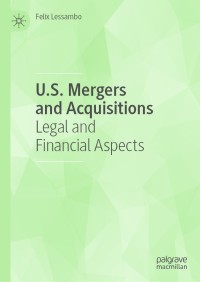Question
Tom Jones, an equity portfolio manager at a wealth management company, meets with his research analyst James Lang to discuss potential investments in three companies:
Tom Jones, an equity portfolio manager at a wealth management company, meets with his research analyst James Lang to discuss potential investments in three companies: Sykes Limited, Justin Manufacturing, and Bernard Pharma.
Jones and Lang review key financial data from Sykess most recent annual report, which are presented in Exhibits 1 and 2, to assess the companys ability to generate free cash flow.
Exhibit 1: Selected Data from Sykess Statement of Income for the Year Ended December 31, 2016 (Amounts in Millions of $)
| EBITDA | 4,000 |
| Depreciation expense | 800 |
| Operating income (EBIT) | 3,200 |
| Interest expense | 440 |
| Tax rate | 35% |
Exhibit 2: Sykess Statement of Cash Flows for the Year Ended December 31, 2016 (Amounts in Millions of $)
| Cash flow from operations |
|
| Net income | 1,794 |
| Plus: Depreciation | 800 |
| Increase in accounts receivable | (2,000) |
| Increase in inventory | (200) |
| Increase in accounts payable | 1,000 |
| Cash flow from operations | 1,394 |
| Cash flow from investing activities |
|
| Purchases of PP&E | (1,000) |
| Cash flow from financing activities |
|
| Borrowing (repayment) | 500 |
| Total cash flow | 894 |
Jones and Lang next analyze Justin Manufacturing. Last year, Justin had FCFF of $140 million. Jones instructs Lang to perform a FCFF sensitivity analysis of Justins firm value using the three sets of estimates presented in Exhibit 3. In his analysis, Lang assumes a tax rate of 35% and a stable capital structure of 30% debt and 70% equity.
Exhibit 3Sensitivity Analysis for Colanari Valuation
| Variable | Base-Case Estimate | Low Estimate | High Estimate |
| FCFF growth rate | 4.6% | 4.2% | 5.0% |
| Before-tax cost of debt | 4.9% | 3.9% | 5.9% |
| Cost of equity | 11.0% | 10.0% | 12.0% |
Finally, Jones and Lang analyze Bernard Pharm. Selected financial information on Bernard Pharma is presented in Exhibit 4.
Exhibit 4Selected Financial Data on Bernard Pharma
|
| Market Value | Required Return |
| Debt | 15,400 million | 6.0% |
| Preferred stock | 4,000 million | 5.5% |
| Common stock | 18,100 million | 11.0% |
| FCFF, most recent year | 3,226 million |
|
| Corporate tax rate | 26.9% |
|
Jones notes that Bernard has two new drugs that are currently in clinical trials awaiting regulatory approval. In addition to its operating assets, Bernard owns a parcel of land from a decommissioned manufacturing facility with a current market value of $50 million that is being held for investment. Jones and Lang elect to value Bernard Pharmaunder two scenarios:
Scenario 1: Value Bernard Phama assuming the two new drugs receive regulatory approval. In this scenario, FCFF is forecast to grow at 4.5% into perpetuity.
Scenario 2: Value Bernard Pharma assuming the two new drugs do not receive regulatory approval. In this scenario, FCFF is forecast using a stable growth in FCFF of 1.5% for the next three years and then 0.75% thereafter into perpetuity.
Based on Exhibits 1 and 2, Sykess FCFF (in $ millions) in 2016 is:
Based on Exhibit 3, the range of firm values (in $million, difference between high and low) use Langs FCFF analysis for variation in Justin Manufacturings cost of equity is:
Based on Exhibit 3, the range of firm values (in $ millions) use Langs FCFF analysis for variation in Justin Manufacturings FCFF growth rate is:
Based on Exhibit 4, Bernard Pharmas cost of capital is approximately:
Based on Exhibit 4, Bernard Pharmas firm value under Scenario 1 is closest to
Based on Exhibit 4, Jones and Lang should conclude that under Scenario 2, the value of Bernard Pharma shares (market cap) is:
Step by Step Solution
There are 3 Steps involved in it
Step: 1

Get Instant Access to Expert-Tailored Solutions
See step-by-step solutions with expert insights and AI powered tools for academic success
Step: 2

Step: 3

Ace Your Homework with AI
Get the answers you need in no time with our AI-driven, step-by-step assistance
Get Started


